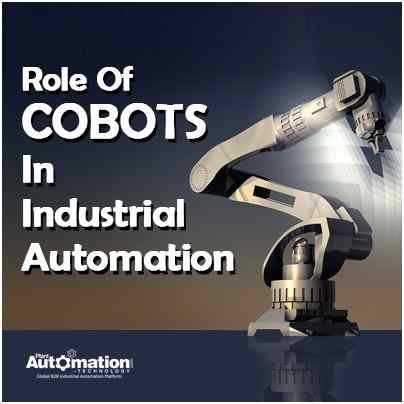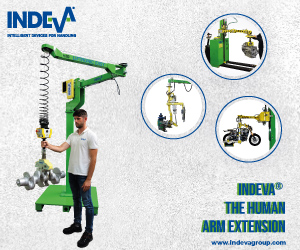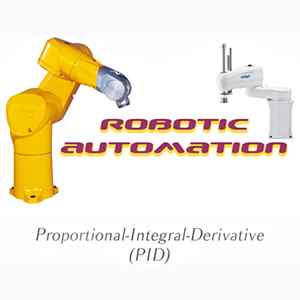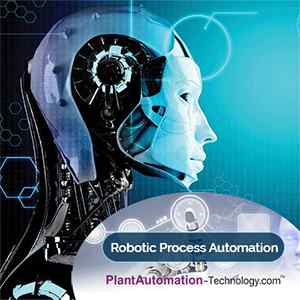Articles
Role Of Cobots In Industrial Automation

To replace human labor in crucial and risky factory jobs, robots have been widely used in the manufacturing industry for many years. But, they operated within safety measures. However, it’s an entirely different scenario with collaborative robots or "cobots". Allowing to work alongside humans, cobots or collaborative robots take away some of the spatial, environmental dangers caused by traditional robots. Cobots in manufacturing industry are very easily reprogrammed and they share the same workspace. Also, their interaction with humans is more natural.
Cobots in industrial automation are the new frontier and will drive the automation market going forward. Designed with inherent safety features like the collision detection and force feedback, cobots excel as they function in work areas previously occupied by human counterparts. One of the leaders in cobot market, is the universal robot.
Role Of Cobots In Industry 4.0
A new phase in the industrial revolution that focuses heavily on automation, real-time data, interconnectivity and machine-learning is referred as Industry 4.0 or IIoT or smart manufacturing. Most cobots as devices, are fully compatible with the design principles of Industry 4.0. The cobots in industry 4.0 are easily able to join the Internet of Things (IoT) in any factory environment and are interoperable. They are equipped with powerful onboard computers and with their ability to pass and collect data, they promote information transparency for modeling, analysis and so on. Technical assistance is provided by conducting a range of tasks that are unsafe, unpleasant or too exhausting for their human co-workers.

Although cobots are normally used more as tools than as autonomous entities, they are able to facilitate decentralized decisions. Additionally, cobots in industry are digital products that continue evolving through software updates and their own programmability. A major role is played by cobots in industry 4.0, in enabling companies that might not have been able to afford industrial robots to begin automating their processes. Cobots are being deployed at SMEs as they are easy to program, light weight, affordable, small and versatile.
Cobots In Industrial Automation
Established by the International Organization for Standardization (ISO), the new technical specification for cobot deployment and production comply with ISO/TS 15066. The cobots are designed with safety-related control systems. For industrial robots, there's a standard 10218-1:2011 5.4 or 10218-2:2011. 5.2. Hand guiding, power and force limiting mechanisms, safety rated monitored stop, speed and separation monitoring are the different functions of cobots in industry. Ensuring safety, these features enable cobots to work closely and collaboratively with their human co-workers.
Compared to the old-generation industrial robots, many financial benefits are offered using cobots. To automate for higher efficiency and output quality, cobots are economically viable for businesses of all sizes and more affordable. Moreover, the ease of use and safety features, make implementation and integration inexpensive. Due to their flexibility in deployment, cobots can be used for multiple functions. They offer faster payback and higher returns on investment.
For different applications such as palletizing, machine tending, pick-and-place operations, they can be customized cost-effectively and easily. This implies that instead of utilizing the cobot for only a limited period tied to a single process, business owners can use the cobot for its entire lifespan automating different processes. While relieving the amount of arduous physical effort required, other long-term tangible benefits include increase in production quality and efficiency, reduction in material wastage, helping employees by reducing mistakes by ensuring dependable, consistent output. So, rather than as a replacement for human staff, cobots enhance productivity by delivering high-quality results each time, serving as an assistive tool in such instances.
Cobots In Manufacturing Industry
Global management consulting firm, Boston Consulting Group predicts that "investment in industrial robots will increase 10% every year for the next ten years, when the robots will take over 23% of the manufacturing jobs, in the world's 25 biggest export nations. So far, only 10% of the jobs that can be automated have been taken over by the robots."
A wide range of potential applications for cobots can be seen in the manufacturing environment such as in an automobile manufacturing plant. There are applications in some manufacturing processes, where it makes sense for workers to perform a manual task. The best option, in other applications, is overall automation. Small and medium-sized manufacturers are eager to take on this technology, because cobots are highly adaptable and affordable and some analysts expect that this section of robotics will see significant growth.
According to a recent research report by Interact Analysis, "the nascent collaborative robot market grew by more than 60% in 2018. In 2017, the industry was worth less than $400 million, but grew to nearly $600 million in the next year," said the research firm. Over the next 5 to 10 years, revenues and shipments of collaborative robots are forecast to grow rapidly.
With the advent of cobots, advances in technology have broken new ground, making automation a lot more exciting today. Cobots can be used in varied sectors, and will change the way businesses work, sell and produce. With these collaborative robotic workers, business owners will gain much profit, if they develop new ways to optimize production and rethink new automation strategy.





